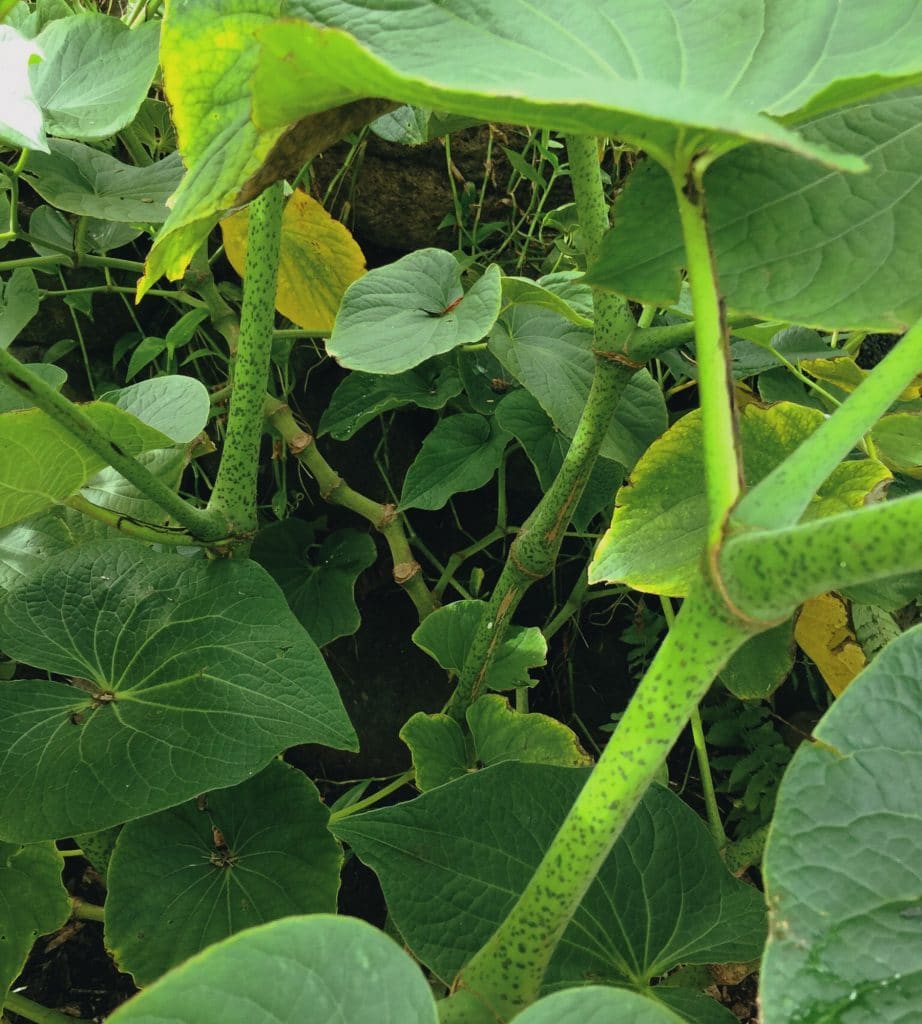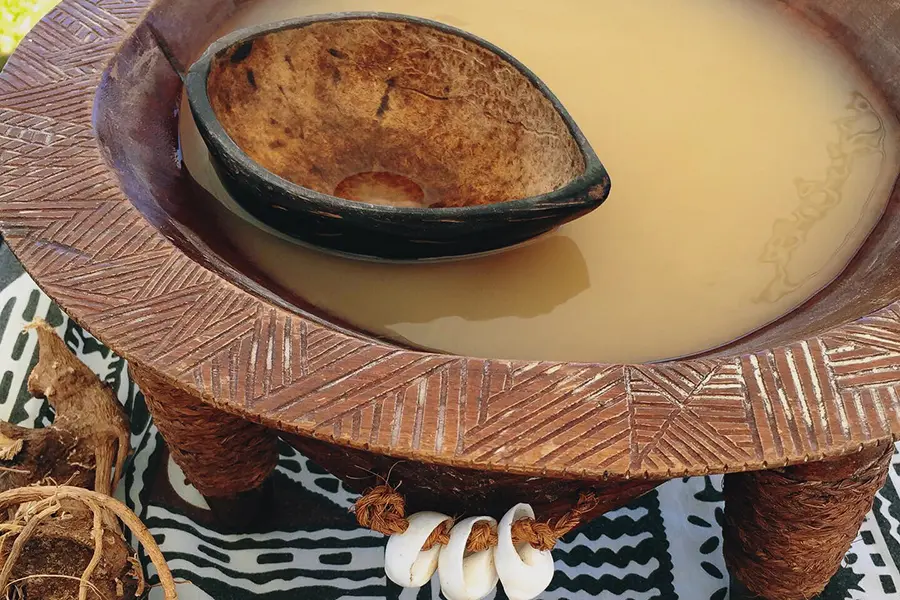DoubleBlind has partnered with Potent Kava as a part of our commitment to supporting local businesses and artisans selling the highest quality products in the plant medicine space
I had my first experience with kava a few years ago, sipping it from a latte in the corner of a brick coffee house in Bushwick, where the menu was filled with other trendy add-ins like kratom and CBD. A far cry from the tropics of Fiji, where much of the world’s kava originates, my Brooklyn kava latte—if not authentic, per se—speaks to the growing popularity of the root, especially for those looking for herbal alternatives to alcohol.
Native to the South Pacific, kava—a.k.a. awa in Hawaiian, ava in Samoan, and yaqona in Fijian—derives its name from the Tongan and Marquesan word for “bitter.” Related to the pepper family, kava is known for its mild, mellow, and calming effect, and can even help with sleep or muscle pain, says Naoshi Grady, founder of Potent Kava, a small family-run company based out of Kauai. “Generally, it’s a social drink that brings family and friends together,” he says. “Traditionally, we drink it out of a big tanoa, a big wooden bowl that’s the kind of bowl they drank kava out of for centuries, talking, sitting cross legged, usually in a circle—in a kava hut or shack.”

According to Hawaiin mythology, Kane and Kanaloa, the gods of water and fertility, brought kava to Hawaii from Kahiki, the heart of Polynesia. “It’s been in Hawaii for hundreds of years, used socially, and in spiritual or religious ceremonies,” Grady explains. Used as a sacrifice to the gods, or in ceremonies such as for the upcoming planting season or to pray for rain, kava has helped people feel connected to the gods and communicate with them. Each region throughout the Pacific has its own particular kava practices—whether that’s presenting kava to the village chief for permission to go fishing, closing a business deal, or settling a dispute—but in Hawaii, Grady says “pretty much anytime is kava time,” be it for a birthday, a funeral, a milestone, a celebration, or simply a get-together.
Like cannabis, kava comes in different varieties, with each strain offering different effects. “It’s not a psychedelic,” Grady distinguishes. “You just get mental clarity and relaxation.” Kava is a long term crop, he adds, taking about three to five years to mature. While it grows wild in certain valleys, those who cultivate it need to prep the ground and area—ideally somewhere in the mountains with a good water supply.
Growing up, Grady traveled to Fiji often with his father, who bought a kava farm there. “He grew some kava down there when I was still a little kid, and got super into the whole thing, exporting it back to Hawaii, where people were selling it,” Grady says. “So I fell into it, and started to farm it, too, in Hawaii.” Now he says there’s an emerging market on the mainland, too, serving spots like that Brooklyn kava cafe.

To prepare kava, you need to mash up the root and mix it with water, before straining it to your desired viscosity. “You knead it with your hands in a strainer, then you strain up all the fibers, then you sit down in a circle and do your kava protocol,” says Grady. “And then you serve it up with half coconut shells and say mahalo ka Awa—giving thanks to the kava.”
How to Grow Shrooms Bundle
Take Both of Our Courses and Save $90!
To the kanaka or native Hawaiian way of life, which includes hunting, fishing, and gathering, says Grady, kava is integral. “One of the most important plants in our culture, in all of the Pacific, is the kava plant.” It’s a way of life that in some ways couldn’t be more opposite from a dark corner of that Brooklyn cafe—but perhaps a taste of that slow, mellow, island life is what the rest of us on the mainland need, especially in hustle hubs like New York. Not only exporting a root, the Pacific islands are exporting a culture with much to teach us about unwinding into a greater presence of mind.

DoubleBlind is a trusted resource for news, evidence-based education, and reporting on psychedelics. We work with leading medical professionals, scientific researchers, journalists, mycologists, indigenous stewards, and cultural pioneers. Read about our editorial policy and fact-checking process here.

DoubleBlind Magazine does not encourage or condone any illegal activities, including but not limited to the use of illegal substances. We do not provide mental health, clinical, or medical services. We are not a substitute for medical, psychological, or psychiatric diagnosis, treatment, or advice. If you are in a crisis or if you or any other person may be in danger or experiencing a mental health emergency, immediately call 911 or your local emergency resources. If you are considering suicide, please call 988 to connect with the National Suicide Prevention Lifeline.



